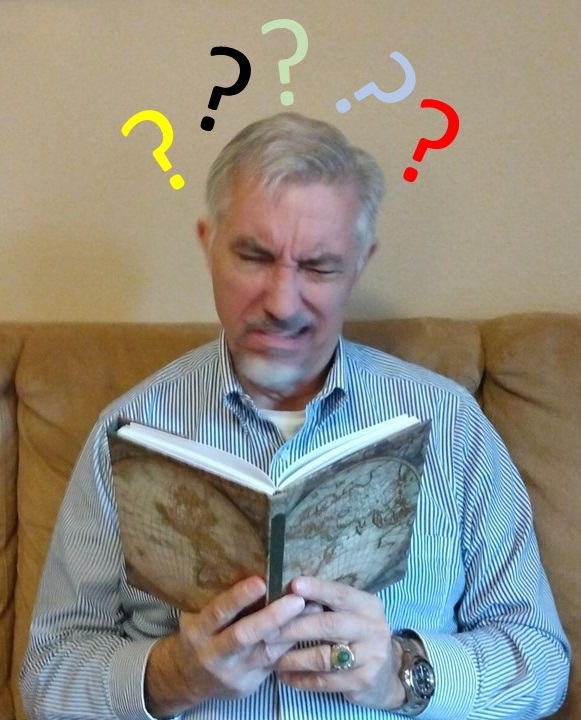With your written words alone, you can evoke many emotions in your readers. You can mystify, fascinate, dazzle, awe, uplift, sadden, and many more. But strive not to confuse.
Consequences
Confused readers might, for a short time, give you the benefit of the doubt. Your readers might slog on a bit longer, trusting you to straighten things out, enlighten, explain.
If the confusion doesn’t get resolved soon, your trusting readers will lose trust and blame you, not themselves, for the confusion. It’s your fault for not being clear, for writing poorly. Hard to win readers back after that.
Story Level
To prevent reader confusion, let’s start with the big picture. You’ve finished your manuscript, whether short story, novella, or novel. In your mind, picture the entirety of it.
- Does it make sense?
- Does it satisfy in some way?
- Could your target readers pick out the themes?
- Is your main character vivid and engaging?
- Could your readers describe the protagonist’s problem, and how that problem got resolved?
If not, perhaps you should do another draft.
Scene Level
Next, look at the story scene by scene. For every one, ask a few questions.
- Have you provided enough description for each important person, place, and object?
- From these descriptions, can your readers form a good mental picture?
- Do your characters stay in-character? That is, do their words, thoughts, and actions make sense in the circumstances, and are they consistent with previously established motivations? If not, have you provided a reasonable explanation for the change in the characters’ behavior?
- Do your characters choose the easiest or shortest path to achieving their goals? If not, have you provided a convincing explanation why your character takes the more difficult or longer route?
If some answers are ‘no,’ consider editing those scenes.
Sentence Level
Now you must go sentence by sentence. Sorry, but to prevent reader confusion, you must. For this, I urge you to read this post by author and writing coach Kathy Steinemann.
In her post, Ms. Steinemann lists several punctuation and word phrasing errors that can confuse readers. Her post includes examples of each along with ways to correct them.
One section deals with word order, and the examples of poor word order remind me of the old Groucho Marx joke—“One morning I shot an elephant in my pajamas. How he got into my pajamas, I’ll never know.”
Overall
The best technique for preventing reader confusion lies outside all the levels I’ve discussed. Ms. Steinemann mentions this technique in her post as two things, but I’ll combine them since they’re related: Let your manuscript rest until you can edit it with fresh eyes.
In other words, leave the story unread for a time while you work on other things. How long should it rest? The longer you wait, the better your editing will be, but also the longer the reading public must wait for its publication. You pick the best compromise there.
Exceptions
No writing rule stands unmarred by exceptions. Are there times when you may want to confuse readers? Yes.
You can get away with confusing them for a time, but only if you resolve their confusion with an ‘ah-ha!’ or a ‘ha-ha!’ You might present a confusing situation such that both character and reader get confused, as in a mystery, then solve the mystery for both character and reader. Ah-ha! Or you can make a joke as in the Groucho Marx example. Ha-ha!
Conclusion
In general, you’re not aiming for confused readers. If they can’t figure out what you mean, they won’t read the rest of the story, or any others written by you. They might tell their friends not to, as well. If this post confused you, then the only one to blame is—
Poseidon’s Scribe


Thanks, Steven. Excellent advice at both macro and micro levels.
Thank you for visiting my site. Your wonderful blogpost inspired me to write this post.